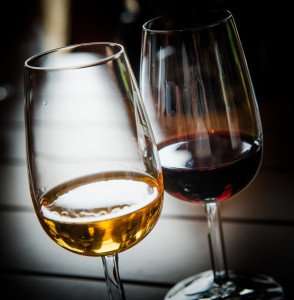What to See in Normandy France
February 20, 2024
We love all the regions where we offer cooking vacations, but some locations really stand out! Normandy is certainly one of those places, offering amazing regional cuisine, fantastic…
Read This Post Portugal is one of Europe’s top food destinations and one of the favorites here at The International Kitchen. Its bright aromas, rife with cinnamon and chiles, garlic and saffron, permeate the meats, soups, and seafoods that are so rich and abundant in this sun-drenched land. And pairing with all of this are the fine wines—red, white, and “green”—that are a staple of life in Portugal. The Portuguese, in fact, frequently rank in the top ten of per capita wine consumption, and among these are the specialty wines such as Port, Madeira, and Vinho Verde.
Portugal is one of Europe’s top food destinations and one of the favorites here at The International Kitchen. Its bright aromas, rife with cinnamon and chiles, garlic and saffron, permeate the meats, soups, and seafoods that are so rich and abundant in this sun-drenched land. And pairing with all of this are the fine wines—red, white, and “green”—that are a staple of life in Portugal. The Portuguese, in fact, frequently rank in the top ten of per capita wine consumption, and among these are the specialty wines such as Port, Madeira, and Vinho Verde.
See our amazing and authentic foodie tours in Portugal.
Don’t worry, wine in Portugal is never actually “green,” as the name “Vinho Verde” would suggest. Rather, “verde” refers to the fact that it is a young wine, not allowed to age. Predominantly produced in the north of Portugal, these wines are usually very slightly sparkling and can be produced from any grape varietal. The whites are light in color and usually not very alcoholic, while a Rosé or Red Vinho Verde will usually be higher in alcohol content.
Check out our Flavors of Portugal culinary tour.
 Madeira
MadeiraMadeira is a Portuguese archipelago in the Northern Atlantic and includes the islands of Madeira, the Desertas, and Porto Santo. It is also, of course, home of the famed Madeira wine. Madeira is a fortified wine which can by dry and consumed as an aperitif, or sweet and used as a dessert wine. The less expensive ones are frequently marketed as cooking wines for making such dishes as chicken with Madeira sauce. The process for making Madeira is quite unusual and dates back many centuries. To prevent wines from spoiling on long sea voyages in the 15th and 16th centuries, seamen added grape spirits to the wine. But they discovered that the heat and rocking of the barrels on ship transformed the wines into what we now know as Madeira. Today, winemakers purposely expose Madeira wines to heat and oxidation to reproduce the effects of the long sea voyage—a process utterly unique in winemaking!
Port (referred to as Porto by the locals) is another Portuguese fortified wine, and is produced exclusively in the northern Douro Valley provinces. It is usually served as a dessert wine because of its sweet flavor, but it does come in dry and semi-dry versions as well. And although there are white ports, it is typically red. The production is straightforward, featuring the addition of a neutral grape spirit (aguardente) during the fermentation, which results in residual sugars being left in the wine, as well as a higher alcohol content. It is then aged before being bottled. Like the other wines we’ve examined here, it can be made from almost any grape varietal. The two most common types of Port are “Ruby Port” and “Tawny Port.” Ruby Port is the most commonly produced type of Port, and the least expensive. It is aged in stainless steel or concrete to prevent oxidation and preserve the ruby color. Tawny Ports are aged in wooden barrels, and the resulting oxidative aging creates a more golden-brown color and a nuttier flavor.
Learn about a dessert wine from Italy: vin santo.
 Check out some of our favorite Port wine cocktails.
Check out some of our favorite Port wine cocktails.
With this brief overview we have barely scratched the surface of wine production in Portugal! If you want to learn more about Portuguese food or Portuguese wines and taste them in their natural setting, consider a culinary vacation to Portugal.
By Peg Kern
Learn more about all of our culinary tours.
Find more photos, videos, food facts, and travel stories from The International Kitchen on Facebook, Instagram, Pinterest, Twitter, and YouTube.